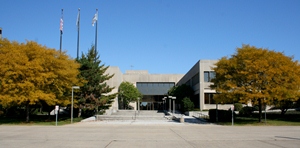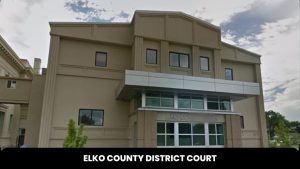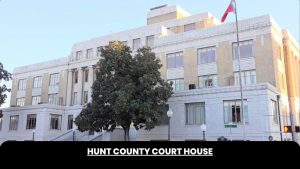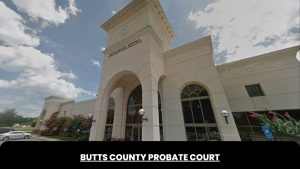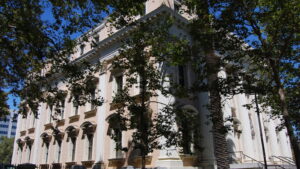Bridgeview Courthouse
Introduction to Bridgeview Courthouse
The Bridgeview Courthouse is an important center of justice and legal proceedings serving the southwest suburbs of Chicago. Opened in 1991, it hosts a wide variety of civil and criminal cases each year. The courthouse building itself has distinctive architecture and houses everything from courtrooms to judges’ chambers. For many residents and businesses in this part of Cook County, the Bridgeview Courthouse is where important legal matters are heard and verdicts are handed down.
History and Background of Bridgeview Courthouse
The Bridgeview Courthouse has an interesting history dating back to the 1980s. As the southwest suburbs of Chicago grew in population, there was increasing need for a dedicated courthouse in this area. Previously, residents had to travel downtown to the Daley Center for many court cases. Planning for the new Bridgeview Courthouse facility began in 1987. The site along South California Avenue was chosen for its accessibility.
Construction on the 142,000 square foot building started in 1989 and was completed in 1991. The total cost was around $31 million at the time. It was designed by the architectural firm The Eggers Partnership P.C. When it opened, the Bridgeview Courthouse consolidated all Circuit Court operations for the 4th Municipal District of Cook County. This helped improve efficiency for the residents and communities served.
Architecture and Design of Bridgeview Courthouse
The architecture of the Bridgeview Courthouse makes it stand out from the surrounding area. The exterior combines ribbed concrete, glass, and granite. Large glass windows allow natural light into the interior spaces. Inside, the courthouse features tall ceilings and marble floors contributing to an open, airy atmosphere.
There are 4 stories in total, which house everything from courtrooms to the law library. On the upper floors, judges’ chambers look out through the windows onto the neighborhoods below. The Bridgeview Courthouse was designed to handle high traffic flow. Stairwells, corridors, and lobbies are spacious to accommodate movement between floors.
Facilities and Services at Bridgeview Courthouse
Inside the courthouse, visitors can access a range of services and resources. There are 18 courtrooms in total used for hearings and trials. Courtroom 600 is the largest and can seat up to 125 people. There are also conference rooms, mediation centers, and meeting spaces. Legal resources like the law library and self-help desk assist those going through the justice system.
On the lower level, the clerks office and cashier handle paperwork and payments for court fees. Those coming for jury duty also check in here. Security services like metal detectors and x-ray screening keep the building safe. The local sheriff’s department operates an on-site satellite office as well. Cafeterias and vending machines provide dining options for those at the courthouse for extended periods.
Courtrooms and Cases at Bridgeview Courthouse
The Bridgeview Courthouse hosts a wide variety of legal cases each year impacting the lives of local residents. In the 18 courtrooms, there are proceedings for both civil and criminal matters. Civil cases involve disputes between individuals, businesses, or organizations while criminal cases are prosecuted by the state against those accused of crimes.
Types of Cases Heard at Bridgeview Courthouse
On the civil side, the courthouse handles lawsuits involving claims like breach of contract, personal injury, malpractice, and small claims. Evictions, foreclosures, divorce proceedings, and child support issues are also decided here. Probate cases dealing with wills, estates, and guardianships proceed through the Bridgeview courtrooms as well.
For criminal cases, the courthouse sees misdemeanor and felony matters. DUI charges, drug crimes, theft, domestic violence, and traffic violations are some common examples. Defendants come before Bridgeview judges for arraignments, pretrial hearings, and jury trials. The courthouse also handles juvenile delinquency cases when minors are charged with crimes.
Notable Trials and Hearings at Bridgeview Courthouse
A few high-profile cases have passed through the Bridgeview Courthouse over the years. In 2009, former Illinois Governor Rod Blagojevich was indicted on corruption charges with proceedings held in Courtroom 600. More recently, actor Jussie Smollett had hearings related to false police reports here before his case was dropped.
The courthouse also hosted proceedings related to the 2008 Tony Rezko political corruption trial as well as the 2001 O’Hare Airport UFO sighting case. With its location near Chicago, Bridgeview will likely continue to see important trials shape legal history in the future.
Safety and Security at Bridgeview Courthouse
As a busy courthouse handling sensitive cases, strict security measures are in place at Bridgeview. Upon entering, everyone must pass through metal detectors and send bags/belongings through x-ray screening. Courtroom deputies provide additional security inside during hearings and trials. The heavy law enforcement presence helps maintain order and safety even during contentious or high-profile legal matters.
Security Screening and Procedures
To enter Bridgeview Courthouse, visitors must place keys, phones, and metal items into trays to be scanned by x-ray machines. Passing through the metal detectors is also required. Security staff is on hand to assist with any questions or issues. Additionally, security cameras monitor activity throughout the building.
Those appearing before a judge may be subject to additional security checks before entering courtrooms. Uniformed deputies stand ready to respond to any disturbances or threats. The public waiting areas also have strict capacity limits and seating assignments to prevent overcrowding. Together these protocols protect all visitors to Bridgeview Courthouse.
Building Safety and Emergency Protocols
Beyond day-to-day security, the courthouse management has procedures in place for emergency situations as well. Fire alarms, sprinklers, and smoke detectors provide life safety protections. Evacuation routes are clearly marked with exit signs in case of fire or other hazard.
For medical emergencies, first aid supplies and AED devices are kept on-site. Courthouse deputies receive training for emergency response. Bridgeview coordinates with local police and first responders for any major incident. Detailed emergency plans cover scenarios like bomb threats, active shooters, or weather disasters. By preparing for risks ahead of time, the courthouse aims to guarantee everyone’s protection.
Accessibility and Convenience of Bridgeview Courthouse
When planning the Bridgeview Courthouse, accessibility for the surrounding communities was a key priority. The location right off Interstate 294 makes it easy to reach from across the southwest suburbs. Transit connections also help those without cars access the building. Other convenient features assist visitors during their time at the courthouse.
Location and Transportation Options
The Bridgeview Courthouse sits near the intersection of South California Avenue and West 103rd Street. The address is 10200 South 76th Avenue, Bridgeview, IL 60455. Nearby Interstate 294 provides highway access from across the region. Many take exit 10 right to the courthouse grounds.
Public transit also serves the site. The Pace Bus system has routes connecting to the nearby Bridgeview Metra station. From there, the 80th Avenue and 103rd Street stops are a short walk from the courthouse entrance. Free parking areas surround the building for those driving as well.
Disability Access Features
To support those with disabilities, the courthouse has dedicated accessibility options. Ramps, automatic doors, and elevators allow movement between floors. Accessible seating is available in waiting areas and courtrooms. Assistive listening systems accommodate the hard of hearing. Service animals are also permitted throughout the building.
Accessibility features like these aim to remove barriers for all people interacting with Bridgeview Courthouse. By considering diverse needs in its design, the building enables full participation in the judicial process.
Hours of Operation and Contact Information
Bridgeview Courthouse is open Monday through Friday from 8:30am to 4:30pm. It is closed on weekends and select holidays. General information can be accessed by calling (708) 974-6140. Further contacts like courtroom numbers, judges’ chambers, and department offices are available on the Clerk of the Circuit Court website.
Knowing the operating hours and contacts ahead of time assists those doing business with the courthouse. Visitors can confirm availability, schedule appointments, and get questions answered from court administration.
The Future of Bridgeview Courthouse
Looking ahead, Bridgeview Courthouse will need to adapt to changing suburban dynamics while maintaining its role dispensing justice. Potential renovations and upgrades could modernize the building. However, preserving its accessibility and community focus will still be vital.
Potential Renovations and Upgrades
Now over 30 years old, discussions have started on updating certain aging aspects of Bridgeview Courthouse. Priorities include repairs to the facade, entrances, and interior finishes. Technology upgrades like new courtroom A/V systems and digitizing records could streamline operations as well.
Expanded space for security queues and waiting areas would enhance the visitor experience too. Funding constraints remain an obstacle to major renovations currently. But targeted high-impact projects could keep Bridgeview Courthouse functioning for the next generation.
Adapting to Changing Community Needs
As demographics and development patterns in the southwest suburbs shift, the courthouse’s role may evolve also. For example, more multi-lingual services could assist growing immigrant populations in accessing justice. New specialty court initiatives around issues like veterans, mental health, or drugs may get added to serve changing needs.
Continual assessment of community priorities will help Bridgeview Courthouse remain a place for all to participate in the legal process. While the foundation is strong, adapting to the future can keep the courthouse vital for many more years.
Conclusion
For over 30 years, Bridgeview Courthouse has served a vital civic purpose in the Chicago southwest suburbs. Its unique architecture houses a range of courtrooms and legal services. Both civil disputes and criminal prosecutions get resolved within its doors each day. Strict security protects all visitors while accessibility features welcome the entire community. While future renovations and adaptations will be needed, Bridgeview Courthouse remains an indispensable justice hub for this region.
FAQs
What types of cases get heard at Bridgeview Courthouse?
Bridgeview Courthouse hosts a wide range of civil lawsuits and criminal prosecutions. Common civil cases involve personal injury, contract disputes, malpractice, evictions, and small claims. On the criminal side, the courthouse handles misdemeanors and felonies like DUI, theft, domestic violence, and drug charges.
What security measures are in place at the courthouse?
All visitors must pass through metal detectors and send belongings through x-ray screening when entering Bridgeview Courthouse. Courtroom deputies, security cameras, and capacity limits provide additional security. The heavy law enforcement presence maintains safety even during higher risk trials.
How can you get to Bridgeview Courthouse without a car?
Public transit provides access for those without cars. Nearby Pace bus routes connect to the Bridgeview Metra rail station. From there, the 80th Avenue and 103rd Street stops are a short walk to the courthouse entrance. Free parking is also available for those who drive.
What accessibility features help people with disabilities?
Ramps, automatic doors, elevators, accessible seating, assistive listening systems, and permitting service animals allow full participation by people with disabilities. Bridgeview Courthouse was designed to remove physical and communication barriers.
What might future renovations or upgrades include?
Potential future renovations could include repairs to aging systems like the facade, entrances, and courtroom A/V equipment. Expanding waiting areas and digitizing records could enhance operations as well. Funding constraints remain an obstacle currently. But selective updates would optimize the courthouse.

